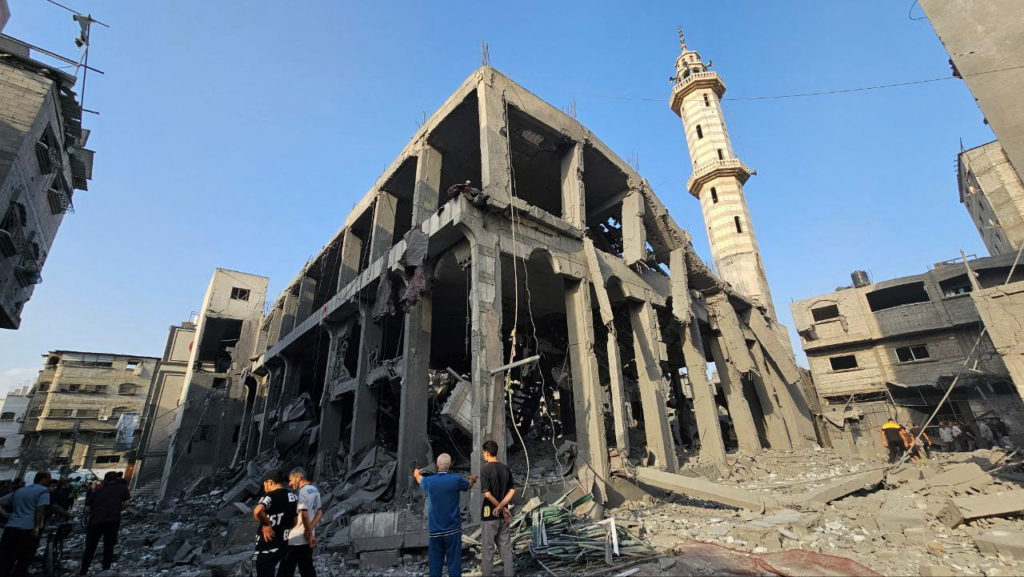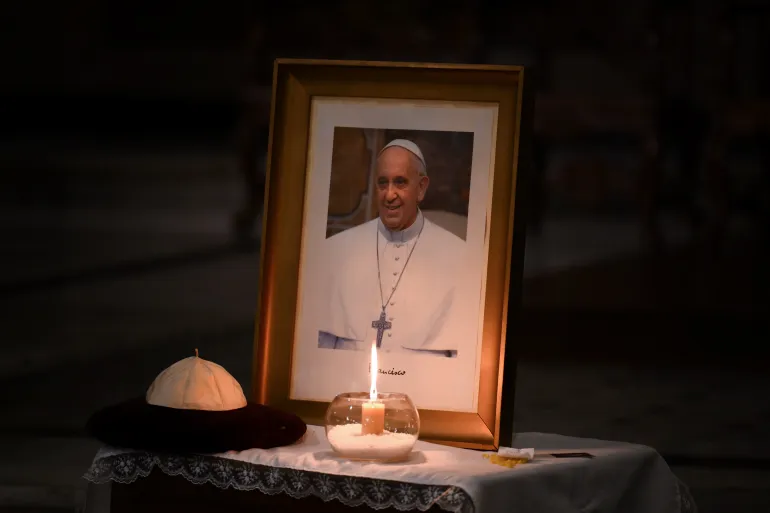October 7, 2023: Following an unexpected and increasingly fatal attack by the Islamic Militant Group Hamas, war officially begins between Israel and Palestine.
When the Imperial Japanese Air Force issued a strike on the U.S. Naval Base of Pearl Harbor during WWII, President Franklin D. Roosevelt classified the event as “a date which will live in infamy.” This phrase has echoed through the walls of history and has been applied to a myriad of detrimental events following its origin.
October 7, 2023, it seems, will be thought of similarly to the victims of the ongoing crisis in the Middle East. Nobody can correctly determine the exact moment that peace will be brokered between the two warring factions, however, the confusing situation could use a significant amount of clarification. Typically, understanding the birth of the struggle is the correct way to begin.
Hamas, the Islamic militant group that controls the Palestinian territory of Gaza, recently launched an unexpected attack on Israel, resulting in over 1,300 Israeli deaths and over 3,200 wounded. The assault has provoked a fierce response from the Israeli military, who have since launched numerous airstrikes in retaliation. Already, authorities in Gaza have reported that at least 2,670 people had been killed by Israel’s retaliatory strikes, with nearly 10,000 wounded.
Hamas was founded in 1987 on the idea of rejecting Israel’s right to exist and is dedicated instead to the creation of a Palestinian country in the region. This, naturally, has left many Jewish citizens in Israel in great fear of something resembling a second Holocaustal event. The exact passage from Hamas’ 1988 charter reads as follows: “The day of judgement will not come about until Muslims fight the Jews, killing the Jews, when the Jew will hide behind the stones and trees. The stones and trees will say, ‘oh Muslims, oh Abdullah, there is a Jew behind me, come and kill him.'”
It is important to note that a new charter was presented in 2017 that did not call for the killing of the Jews in the same way that the original charter did, however there is still the idea that Hamas has a deeply rooted history of hatred for the Jewish population.
After their socio-political success in 2006, Hamas de facto seized the Gaza Strip, one of the two major Palestinian territories, from Israeli control. Since then, they have received crucial support and weapons from outside countries, namely Iran. Hamas leader Ismail Haniyeh, said in an interview with Al Jazeera television last year that his group had received $70 million in military help from Iran. “We have rockets that are locally manufactured but the long-range rockets came from abroad, from Iran, Syria and others through Egypt,” he added. Hamas is one of several organizations vying for influence over Palestinians in the decades-long conflict over their future since the modern state of Israel was created in what had been Mandatory Palestine.
The Origin of Palestine:
Palestine is a region that has been controlled by many kingdoms and empires over the last 3 thousand years. Namely, Ancient Egypt, the Persian Empire, and the Roman Empire. Yes, that’s how deeply rooted this history is. It wasn’t until the region came under Roman control, that Palestine officially got its name. In more modern times (1500s-1900s), Palestine was ruled by the Ottoman Empire. However, after the end of WWI, the Ottoman Empire was relieved of its duties, and Palestine was taken over by Great Britain. Palestine is not currently recognized as a state by the U.N., but has been granted non member observer status. Due to the fact that Palestine doesn’t have a sufficiently effective government or a defined territory, there is controversy as to whether it can be considered a state in accordance with international law definitions. However, it could also be argued that because 139 U.N. member and non member states do recognize Palestine as a state, it might overcome those other arguments. This has been widely debated. Israel and the United States are just two places that do not recognize Palestine as a state.
1947: Britain Asks The U.N. to Consider the Future of Palestine:
In February 1947, the British proposed that the United Nations consider the future of Palestine and take over relations in the region amid ongoing tension. The United Nations later adopted a resolution to split Palestine into two independent states–a Jewish State and an Arab State. Palestinians refused to recognize the resolution, and violent conflict between both groups continued. On May 15, 1948, Israel declared independence, thus beginning the Israeli-Arab War, with five Arab states fighting against the creation of the state. Palestinians were either forced off their lands or forced to flee, marking the first large-scale exodus in what would become a decades-long battle over land ownership. Israel, backed by foreign powers, won the war, and the territory was divided into three parts: Israel, the West Bank, and the Gaza Strip. Following this division, the West Bank and the Gaza Strip each came under control of Jordan and Egypt, respectively, until the Six-Day War in 1967.
The Six-Day War was brief conflict that took place June 5–10, 1967. Israel’s decisive victory included the capture of the Gaza Strip and West Bank, as well as the Sinai Peninsula and other areas of land. The status of these territories subsequently became a major point of contention in the Arab-Israeli conflict.
*The Gaza Strip: 140 square mile strip of land along the Mediterranean Sea surrounded by Israel and Egypt. It is currently home to roughly 2 million.
*The West Bank: a landlocked 2,200 square mile region bordered by Israel and Jordan with a population of roughly 3 million.
1987: A Palestinian Uprising:
In 1987, the first armed uprising from Palestinian forces in their struggle for self determination began. However, it ended in 1993, when Israel’s then-Prime Minister Yitzhak Rabin, and the then-leader of the Palestine Liberation Organization (PLO) signed the Oslo accords, which declared the PLO as a representative for the Palestinian people and recognized Israel’s “right to exist in peace.” A second civil uprising (2000) from Palestinian forces, which ended in 2005, led to the Palestinian people’s autonomous control of the West Bank and Gaza.
In 2005, Israel disengaged from the Gaza Strip, uprooting its settlements in the region. The following year, Hamas won an election to control the Gaza Strip, kicking out representatives of the PLO. The armed takeover of Gaza by Hamas in 2007 prompted Israel to impose a blockade on Gaza, greatly restricting the movement of people and goods into and out of the area. These restrictions have been a concern of humanitarian groups around the world about the conditions in which Palestinians are forced to live.
The conflict didn’t stop then, for In the years following, Hamas and Israel would continue to engage in armed combat.
The death toll from the Hamas attack is expected to rise as Israel continues to repel Hamas fighters in the country while launching retaliatory operations, including numerous of its own strikes on Gaza. President Joe Biden has signed off on sending “additional assistance” to Israel,” with more to follow over the coming days.





